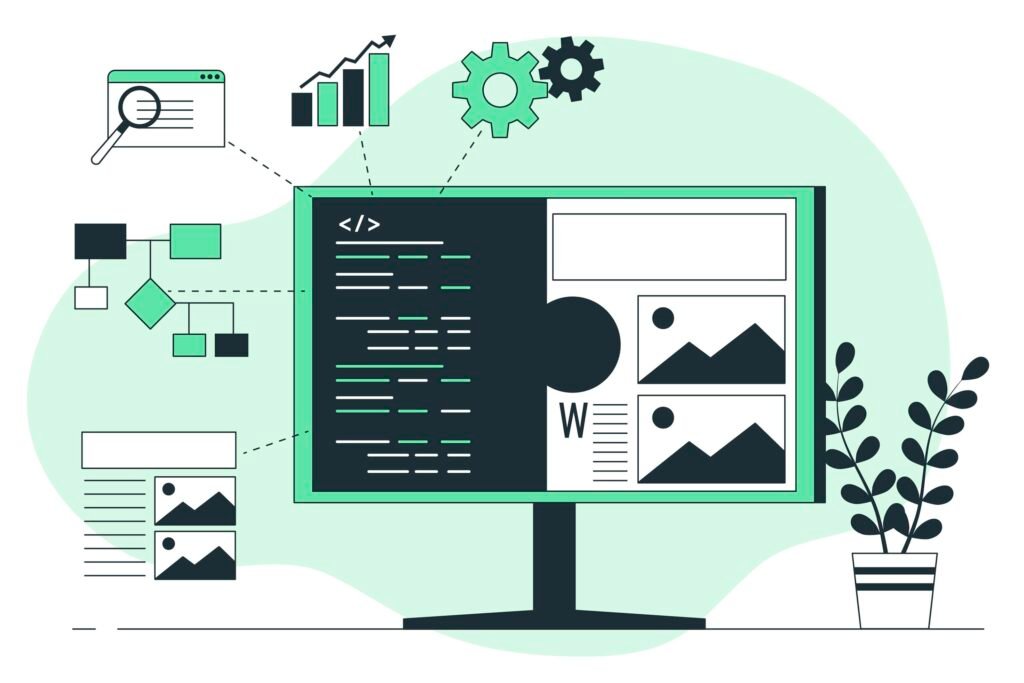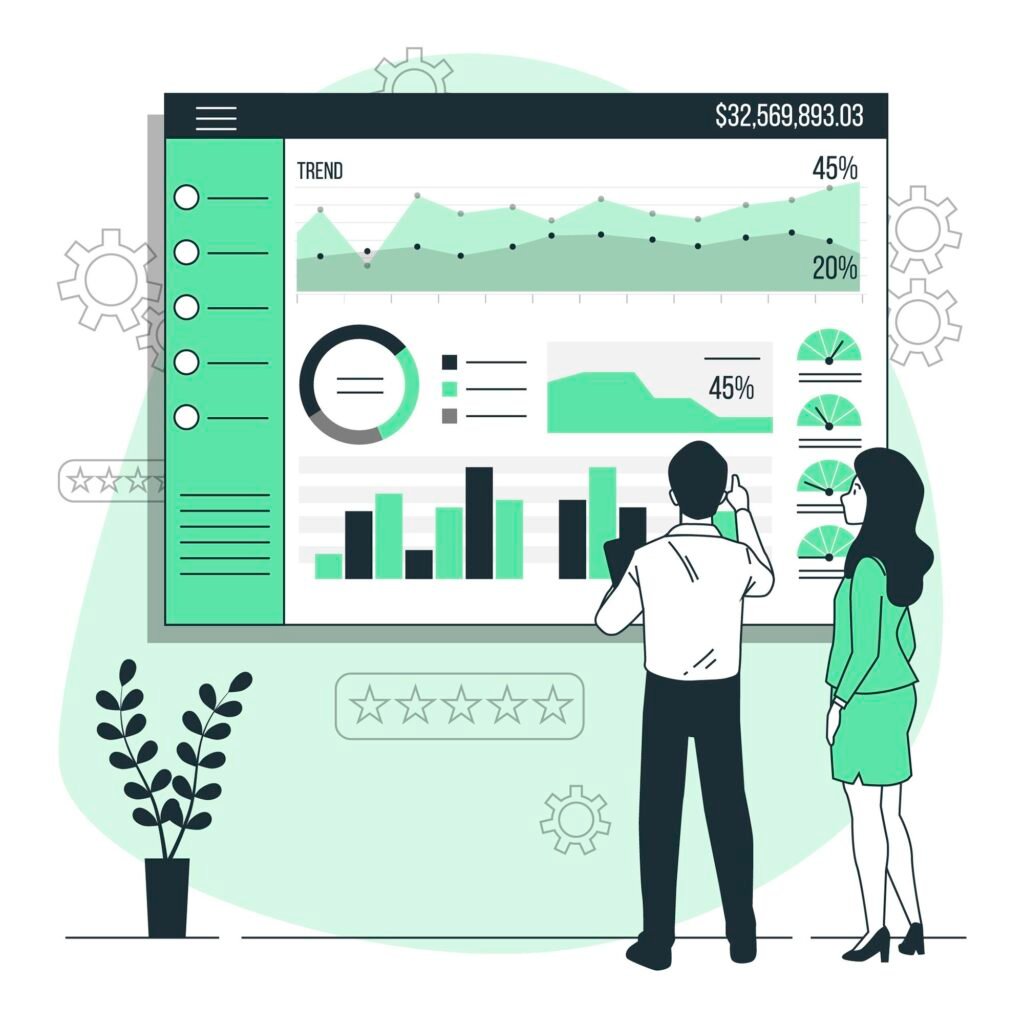Building Data Engineering Ecosystem: Key Technologies, Best Practices, and Trends
8 Aug 2024
Ilya Lashch

Summary
This article emphasizes the critical role of a data engineering ecosystem in enabling real-time data processing, advanced analytics, and automated decision-making for businesses. It outlines the essential components and best practices for building a robust data infrastructure, highlights the challenges faced, and identifies future trends such as machine learning, serverless architectures, and edge computing.
Key Technologies and Tools in Data Engineering
According to IDC, more than half (53 percent) of companies now have an enterprise-wide digital transformation strategy. Real-time data processing makes a crucial difference. Therefore, a well-thought-out big data approach with data from numerous sources is required for virtual transactions, inventories, and IT infrastructures. This is the only way advanced data management can provide a holistic overview. Sources for contemporary data infrastructure can be:
- Virtual network protocols
- Security-related events and patterns
- Global network traffic patterns
- Anomaly detection and resolution
- Compliance information
- Customer behavior and preference tracking
- Geolocation data
- Social channel data for brand sentiment tracking
- Stock levels and shipment tracking, and more
What is modern data ecosystem and how can businesses process this enormous incoming data flow? Let’s overview a general data engineering stack.
Big Data Frameworks
Big data frameworks are essential for handling and processing large datasets across distributed computing environments efficiently. These contain structured, semi-structured, or unstructured data. Datasets can range in size from terabytes to petabytes to exabytes. Here are the
- Hadoop: An open-source framework that allows for the distributed storage and processing of large data sets across clusters of computers using simple programming models. Its main components are the Hadoop Distributed File System (HDFS) and a data processing engine that implements the MapReduce program for filtering and sorting data.
- Spark: A unified analytics engine for big data processing, known for its speed and ease of use, offering high-level APIs in Java, Scala, Python, and R. is intended to run faster than Map Reduce by processing data and holding it in memory for subsequent steps rather than writing the results directly back to memory. This allows Spark to be up to 100 times faster than Hadoop for smaller workloads.
- Hive: A data warehouse software built on top of Hadoop, facilitating data query and analysis through a SQL-like interface, enabling easy data summarization and ad-hoc queries. Apache Hive allows developers to use Hive Query Language (HQL) statements similar to standard SQL statements for data query and analysis. Hive can run on the HDFS and is best suited for data warehousing tasks such as extract, transform, and load (ETL), reporting, and data analysis.
- Flink: A stream-processing framework that provides robust capabilities for both batch and stream data processing, known for low latency and high throughput.
Stream Processing Technologies
Stream processing is based on continuous data streams. Data sources, such as sensors, generate a constant stream of data in a specific data format. The data stream consists of individual data or smaller packets with multiple data. How much data is filled into the packages can depend on time or quantity. Receivers such as analysis applications receive the data stream and process it. The most widely used software solutions include:
- Kafka: A distributed real-time processing platform handles trillions of events a day. It is used for building data pipelines in real time and stream apps. An analytics company Swim found in its «State of Streaming Data» study that nearly half of companies generate insights from streams, with Kafka as the leading choice in terms of enabling technology.
- Flink: A powerful stream processing framework that provides low-latency data processing, stateful computations, and support for event time processing.
- Storm: A distributed real-time computation system that allows for the processing of unbounded data streams, ensuring reliability and scalability.
- Kinesis: An Amazon Web Services (AWS) service for real-time processing of streaming data at a massive scale, enabling application development for streaming data analytics.
Practical examples of utilizing cloud-based data services include use cases across all industries, including real-time stock trading, minute-by-minute retail inventory management, social media feeds, multiplayer gaming, and ride-sharing apps.
For example, when a passenger orders a ride through Lyft, real-time data streams unite to create a seamless user experience. Using this data, the application combines real-time location tracking, traffic statistics, pricing, and real-time traffic information to find the best possible driver for the passenger, calculate prices, and estimate the estimated arrival time at the destination based on both real-time and historical data.
Data Warehousing Solutions
Data warehousing solutions are designed for storing and managing large volumes of structured and semi-structured data, optimizing query performance and analytics. Reliable data, especially when collected over time, helps users make smarter, more informed decisions about running their business.
- Redshift: A fully managed data warehouse service by AWS, offering fast query performance and scalability for handling large datasets.
- Snowflake: A cloud-based data warehousing platform that provides separate compute and storage scaling, automatic performance optimization, and secure data sharing.
- BigQuery: Google Cloud’s fully managed, serverless data warehouse that enables super-fast SQL queries using the processing power of Google’s infrastructure.
- Synapse Analytics: An integrated analytics service from Azure, combining big data and data warehousing, providing end-to-end analytics solutions.
A data warehouse is inherently relational. This means that the structure or schema of the data is determined by predefined business and product requirements that are compiled, customized, and optimized for SQL query operations. Therefore, data warehousing solutions are best suited for storing data prepared for a specific purpose, such as data mining for BI analysis or obtaining data for an already identified business use case.
For example, businesses can collect data from multiple structured sources across the organization, such as point-of-sale systems, websites, or email lists, and quickly retrieve and bring them together in one place for analysis and insights.
Workflow Management Tools
Workflow management tools orchestrate and automate complex workflow in the evolving data landscape, ensuring tasks are executed correctly and dependencies are managed. By automating routine processes, teams can focus on higher-impact projects instead of repetitive tasks and gain insight into workflows to identify opportunities. The most widely used tools include:

- Airflow: An open-source tool to programmatically author, schedule, and monitor workflows, with a focus on creating data pipelines.
- Luigi: A Python package for building complex pipelines of batch jobs, handling dependency resolution, workflow management, and visualization.
- Oozie: A workflow scheduler system to manage Apache Hadoop jobs, supporting multiple types of Hadoop jobs and workflows.
- Prefect: A modern workflow orchestration tool that enables data engineers to build, monitor, and manage complex data workflows with ease and reliability.
Workflow management software runs on data sources and a set of rules to process that data to reflect human activity. These workflow tools typically follow «if/then» statements and operate under the rule «if A occurs, then do B.» This rule-based logic system outlines the actions that should follow an event. This saves time and money and reduces the risk of human error.
Best Practices to Build a Modern Data Ecosystem
Even considering the abovementioned challenges, data pipelines optimization can significantly improve a company’s data engineering processes. However, this technique’s effectiveness depends on how it is implemented into the workflow. Here is a comprehensive overview of data engineering best practices:
- Choose clear targets: Set clear goals that you want to achieve with big data. Identify the specific challenges or opportunities you want to address and determine how big data can help you do so.
- Collect relevant data: Identify the relevant data sources (you can refer to the list mentioned above) that are important to your business. This can be internal data from different departments, but also external data such as social media data, customer data, or publicly available data. Ensure data quality is high and meets legal requirements.
- Find suitable IT infrastructure: To utilize cutting-edge data solutions, you need a suitable infrastructure that enables efficient data storage and processing. This may include the use of cloud platforms, databases, specialized analysis tools, or other data engineering technologies.
- Expand competencies: Ensure your team has the skills and knowledge necessary to effectively analyze data, build models, and interpret insights. Employ big data analytics services to reduce the time required to implement new technologies and reallocate focus to higher priorities in the long term.
- Prioritize sustainability: Plan for the long term and ensure your data engineering ecosystem is scalable and flexible. This means you can meet growing amounts of data and new requirements. Consider new technologies and trends to continually improve your big data strategy.
- Conduct regular testing: Use agile data quality assurance methods to test and iteratively improve your big data initiatives. Start with smaller projects, gain experience, and adapt your strategy accordingly.
Challenges in Data Engineering
In addition to the numerous advantages of data governance frameworks for companies, there are also some challenges and disadvantages. These concern various aspects, for example in technology, management, ethics, and law. Let’s examine them in more detail:
- Maintaining data security. As data volumes grow, it is crucial to implement robust measures to protect user privacy and secure data against unauthorized access and cyberattacks. To comply with the advanced security standards, businesses must employ advanced encryption, access controls, and regular security audits to safeguard data privacy within the ecosystem.
- Data processing & analysis. Efficiently processing and analyzing vast amounts of data requires sophisticated algorithms and powerful computing resources to deliver real-time insights. You can utilize data engineering as a service to enhance data processing capabilities without the unplanned costs of extending the local infrastructure.
- Ethical & legal issues. Deploying data engineering solutions raises ethical concerns, such as potential surveillance and profiling of individuals, and must comply with legal frameworks like the GDPR. Implementing strict data governance policies and ensuring data engineering principles’ compliance with all relevant legal and ethical standards are obligatory.
- Shortage of skilled workers. There is a significant demand for professionals with expertise in data engineering, including data scientists, analysts, and engineers, but a shortage of skilled workers in this field. Partnering with experienced tech providers can augment the company’s team with the needed skills in narrow areas.
- Operational complexity. Managing and maintaining a data engineering ecosystem involves intricate workflows and numerous tools. Constant monitoring is one of the most expensive among modern data challenges. Try to simplify operations by adopting scalable data platforms and automated tools to streamline workflows and reduce complexity.
Ultimately, handling massive amounts of data should be aimed at creating value for your business. Identify specific steps in data integration strategies to transform the insights you gain into business benefits, whether through process optimization, improved customer retention, new product development, or opening up new markets.

Future Trends and Innovations
Cloud technologies have certainly contributed to the development of data engineering. Agile companies need the efficiency, organization, and speed that characterize the modern data ecosystem.
The importance of data engineering will increase in the future. Companies already realize the enormous benefits of innovative data solutions and invest in data science initiatives. The most noticeable trends include:
- Data validation with machine learning: Machine learning integration for preparing data transforms the entire data engineering ecosystem. State-of-the-art technologies automate data classification and validation, enabling deeper analysis and uncovering complex insights beyond traditional methods.
- Automatic predictions and insights: Machine learning models can now generate predictions and insights automatically, reducing the need for user input. Once trained, these models will provide real-time analytics, helping businesses make quick, informed decisions and respond proactively to trends.
- Adoption of serverless architectures: Serverless computing is becoming popular in data engineering. It eliminates the need for server management, making data pipelines more flexible and cost-effective. Resources are used only as needed, saving costs and enhancing scalability.
- Impact of edge computing: Edge computing processes data at the source, reducing latency and bandwidth usage. This allows for real-time analytics and faster decision-making, improving the efficiency and responsiveness of data-driven applications.
Conclusion
Building a modern data ecosystem requires a strategic approach that encompasses clear goal-setting, meticulous data collection, appropriate IT infrastructure, skillful team development, sustainability planning, and rigorous testing. By adhering to best practices, companies can reap the benefits of,:
- Enhancing decision-making with advanced analytics and real-time data processing
- Personalizing customer experiences using data analytics to tailor products and services
- Predicting market trends with predictive analytics and machine learning
- Ensuring data security and compliance with robust governance frameworks
As an experienced consulting and development company in the data engineering field, we accompany companies into the data-driven future. Reach out to us for a personal discussion on your data ecosystem architecture construction.


